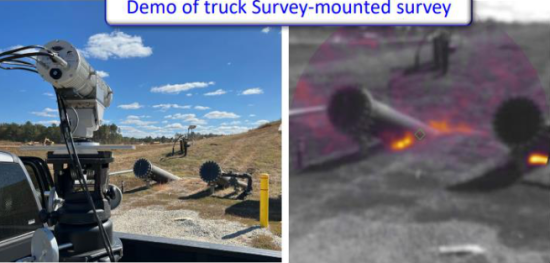No gas readings have been detected on the Blackline alarms are all reading 0.00% LEL No Gas. There is no gas migration into houses.
The results of the BGS and MRSL monitoring around the whole site outside the footprint of No 7 Cleat Hill are within normal background levels and do not indicate any migration of gas from the geothermal borehole towards any of the houses.
There is some variation in results, dependent on rainfall, temperature and atmospheric pressure changes and this is normal.
The MRSL monitoring at the geothermal borehole indicates that there is still gas flow from the ground, but it is limited to the immediate area of the borehole (within 5m) and it emits from three, very localised, points in the ground.
It is easily dispersed in the air and cannot be detected at 50mm above the ground surface. This shows the gas is not under any significant pressure.
There has been some increase in the flow (or flux) rate recorded by BGS at a single point near to the geothermal borehole (within 5 m). It has increased on three consecutive visits up to 3.3m3/day.
On the third increase MRSL were asked to complete additional monitoring at the borehole and at the location of the former No 7 Cleat Hill. If there is an increase in leakage from the deep gas reservoir then No 7 is the location where it will be first detected.
There was no gas detected anywhere at that location. MRSL also completed some additional check monitoring that indicates the BGS results are valid.
Whilst these increases might seem concerning the current rates are still a fraction of the flow that was occurring before the well was sealed and caused the gas to migrate large distances.
The situation has been reviewed by the Technical Cell who all agree that there is no change to the safety of the residents.

